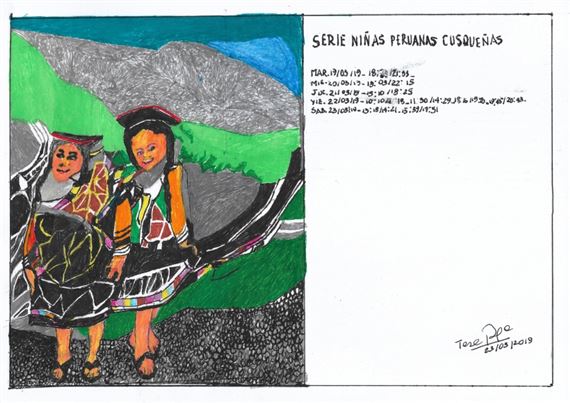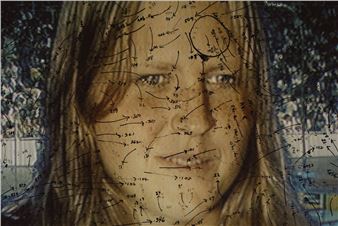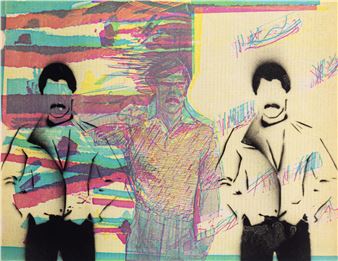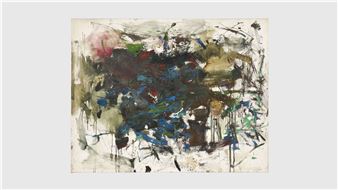Teresa Burga
Spotlighting key moments of Burga’s diverse conceptual practice, the exhibition includes historical drawings from the series Máquinas inútiles (Inutile Machines), including Florero (Vase) (1974) and Lámpara (Lamp) (1974). In these conceptual proposals, Burga outlines detailed measurements and schematics for the three-dimensional production of sculptural objects that betray their own function, rendering them “useless.” In Florero, Burga envisions a geometric vase as a porous vessel, unable to retain hypothetical water to support the life of the flowers it contains. Lámpara, similarly, is designed as an ornate lamp that cannot hold a bulb, thus producing no light. Developed in the mid-1970s, as Burga examined societal structures and their gaps in logic, the Máquinas inútiles series considers how utility determines value.
Anchoring the exhibition is a large-scale wall drawing from Burga’s Insomnia Drawings, one of the few series she continued to develop while working in Peru’s General Customs Office. Produced over the course of thirty years when Burga suffered from sleeplessness, the Insomnia Drawings are composed of hypnotic lines and geometric patterns, which read as gestural, automatic, and spontaneously informed by chance. Manipulating spatial proportions to create optical illusions, each Insomnia Drawing suggests vertiginous movement. Serving as technical sketches for large-scale wall drawings, the series destabilizes the notion of ubiquitous and singular authorship. Like many of Burga’s radical conceptual works, they can be reproduced by various authors and in various contexts.

Recommended for you
Spotlighting key moments of Burga’s diverse conceptual practice, the exhibition includes historical drawings from the series Máquinas inútiles (Inutile Machines), including Florero (Vase) (1974) and Lámpara (Lamp) (1974). In these conceptual proposals, Burga outlines detailed measurements and schematics for the three-dimensional production of sculptural objects that betray their own function, rendering them “useless.” In Florero, Burga envisions a geometric vase as a porous vessel, unable to retain hypothetical water to support the life of the flowers it contains. Lámpara, similarly, is designed as an ornate lamp that cannot hold a bulb, thus producing no light. Developed in the mid-1970s, as Burga examined societal structures and their gaps in logic, the Máquinas inútiles series considers how utility determines value.
Anchoring the exhibition is a large-scale wall drawing from Burga’s Insomnia Drawings, one of the few series she continued to develop while working in Peru’s General Customs Office. Produced over the course of thirty years when Burga suffered from sleeplessness, the Insomnia Drawings are composed of hypnotic lines and geometric patterns, which read as gestural, automatic, and spontaneously informed by chance. Manipulating spatial proportions to create optical illusions, each Insomnia Drawing suggests vertiginous movement. Serving as technical sketches for large-scale wall drawings, the series destabilizes the notion of ubiquitous and singular authorship. Like many of Burga’s radical conceptual works, they can be reproduced by various authors and in various contexts.

 ARTISTS
ARTISTS













